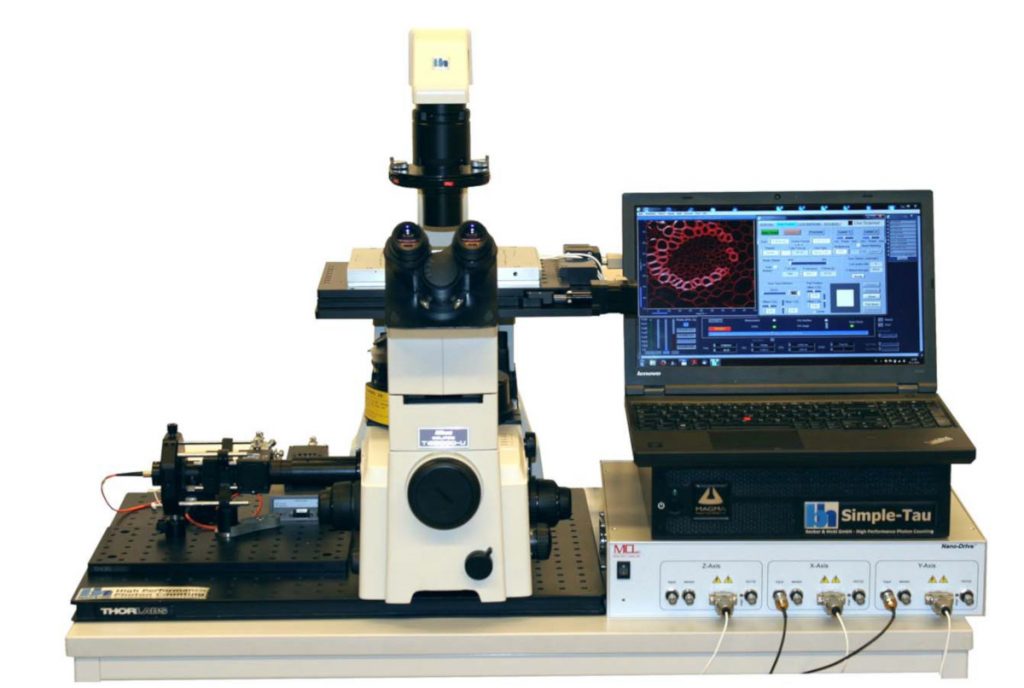The PZ‑FLIM-110 Piezo Scanning FLIM system uses bh’s multi-dimensional TCSPC technique in combination with a Mad City Labs piezo scanner. The scanner is controlled via a bh GVD-120 scanner control card, the FLIM data are recorded by an SPC-150 or SPC-160 TCSPC / FLIM module. Both scanning and data acquisition are controlled by 64-bit bh SPCM TCSPC software. The system is able to run X-Y scans, X-Z (vertical) scans, and to record simultaneously FLIM and PLIM data. The system is able to scan images with up to 2048 x 2048 pixels, still recording decay data with 256 time channels per pixel. At 512 x 512 pixels the decay curves can be recorded into up to 4096 time channels. FLIM data are thus obtained at excellent spatial and the temporal resolution. Scan times for 512 x 512 pixel images are on the order of 100 to 300 seconds, scan times for 2048 x 2048 pixel images can be 6 minutes and more. That means the acquisition time is normally determined by the speed of the scanner, not by the time needed to acquire a sufficient number of photons. If the slow scan speed is tolerated the PZ‑FLIM-110 is a cost-efficient alternative to a galvanometer scanner system. For more detaols please see application note ‘The PZ-FLIM-110 Piezo-Scanning FLIM System‘.
Left: Lifetime image of a convallaria sample. Intensity-weighted lifetime of triple-exponential decay. 512 x 512 pixels, 1024 time channels per pixel. 40x NA1.3 Oil immersion lens, effective pinhole size 3 AU. Middle: Decay curves in selected pixels. Right: Photo of the bh PZ-FLIM-110 piezo scanning system. Nikon TE2000 microscope, PZ-FLIM optical assembly connected to left side port, BDL-SMN ps diode laser, Mad City Labs Nano-View 200-3 piezo system, bh Simple-Tau TCSPC system.



